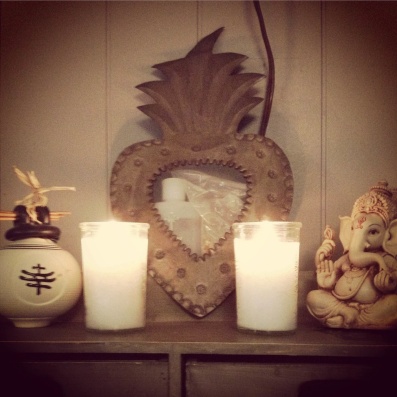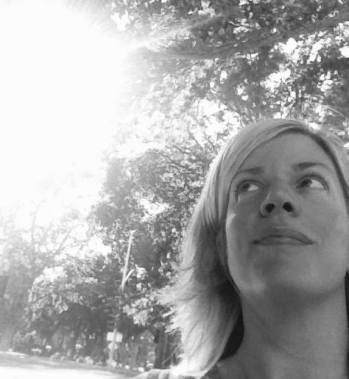When I was little, I made sure to sit next to my Uncle Jim at every holiday dinner. That way, we could play “Foot.” I can’t imagine any adult having the patience for such a game, but somehow he did. “Foot” consisted of me quietly sneaking my foot onto his knee at the table. Then I would wait, fairly bursting with the hilarity of this, for him to notice. “What?” he would cry, in feigned outrage. “What is this? Foot? Oh, god, not this again. I thought I had gotten rid of foot. Oh, foot. What am I going to do now? What will I do about this foot?” When I was satisfied with his reaction, I would slowly retract foot, only to repeat the game in about five minutes. This went on through the whole meal, and not once did he say: “Madeleine, I’m trying to have a conversation with the adults here. Can foot wait?”

I wish we could have found a photo of him smiling for his missing poster.
On Monday, October 24th, my Uncle Jim set out from Las Vegas, NV, to visit my Mother in Vancouver, WA. On Wednesday, October 26th, he called her twice: once at ten in the morning, and once at noon. Both times he was calling from a pay phone, as he doesn’t have a cel. He said that he was lost, but he believed himself to be in the area of my Mom’s condo, and he would arrive there shortly.
But then he didn’t. When he didn’t turn up by Thursday, his sisters, my Mom and my Aunt Janet and my Aunt Ann, started notifying authorities. I didn’t hear a thing about it until Friday, after teaching my morning yoga class, when I had a text from my Cousin. I paced the circumference of the studio, making flustered calls to friends and family. I learned that Jim had been exhibiting signs of forgetfulness, and it amazed me that we had allowed him to make this journey. He doesn’t sleep in hotels, either, preferring to pull over to the side of the road and sleep at rest stops.
Those days of consistent family holidays are long gone. We are scattered now, to different states, to different problems. We forget to tell each other things. We also sometimes forget to take care of each other.
By Friday night, we were in full tilt search on the Internet. We also discovered that missing persons detectives don’t work weekends. So on Saturday, my spouse Joy and I decided to hit the road. Sunday found us flyering rest stops, talking to people, gazing out the window for a dark grey Honda off Interstate 5.
Through the sickened nauseous haze of those days, I became aware that something quite wonderful was happening. People were stepping in and picking up this burden with me. On Facebook, not just my friends, but friends of friends, and then their friends, posted the information, offered condolences and suggestions, and kept checking back for further news.
My spouse asked for an indefinite amount of time off from her job to help find him, with no real idea how much that might impact her being employed upon her return.
My family pulled together, too. I communicated more with my cousins those five days than I have in all the family holidays put together. We all found our strengths and shared them with each other, falling into natural rhythms and roles. For once, we really took care of each other.
I found out that more people have had a loved one go missing than you might think. People started writing to me with their stories. Most of these did not end well. A woman I didn’t know wrote to tell me her Brother-in-law was missing for three weeks before a helicopter spotted his car, with his body inside, off the side of a road. When Joy and I were on our search, a waitress asked where we were headed. When I told her, she put her hand on her heart and sank into a chair. Her Grandpa had gone missing while hunting. They had searched for him for 14 days, before another hunter found his body, curled up in a tree, one day before the snows would have buried him completely. “My heart breaks for you,” she said. “I’ll pray for you and for Jim.”
These sad stories, somehow, didn’t make me sadder. They reminded me that I was not the first person to have a loved one go missing, and I wouldn’t be the last. That night, in the motel, I finally had the courage to open my dog-eared copy of Pema Chodron’s “When Things Fall Apart,” and the chapter it naturally opened to was about the practice of Tonglen. I usually think of it as a formal meditation practice, but she was speaking of it more as a way of moving through the world. In Tonglen, we reverse our tendency to push away suffering. Instead, we breathe it in, with the sincere wish that all others sharing this same pain could be free of it. When we breathe out, we offer space, ease, freedom for everyone in the same circumstances. I’ve read this chapter many times, but it’s never had the same immediacy. “When we don’t close off, and we let our hearts break, we discover our kinship with all beings.”
So I closed my eyes and I let my heart break. I quietly cried and cried. I wasn’t just crying for Jim, but for Halee’s Grandpa, and Yvonne’s Brother-in -law, and the many faces on the other posters at the rest stops. Sometimes, people set out to get somewhere, and they just don’t arrive.
Then, I rolled off the bed onto the floor and took a knee to chest. I did a figure four stretch and then a lunge. It was the first time I’d done yoga since I’d heard the news, and it felt simple and really good. With my body somewhat soothed, I crawled back into bed, put a hand on my heart and let my breath guide me to sleep.
That same night, at 12:40am on Halloween morning, West Seattle Police Officer Patrick Chang found my Uncle Jim in a Seattle park, disoriented, but alive. He was sleeping in his car, wearing a lot of layers on top but shorts on the bottom, with the heat all the way on but the windows down. He seemed to have no idea five days had passed, that he was lost, and that people were worried about him.
I will be forever grateful for the thoughts and prayers that I believe shone like a spotlight on my Uncle the night he was found. I’m also grateful for Officer Chang’s thoroughness, kindness, and sense of humor. When he called my Mother to tell her he had found her Brother, he assured her that he was safe and well. Then he said: “I must say, he has a beautiful view of the city right here. Would you like to speak with him?”
 Is there anything more banal than work stress? There are, at any given moment, about a dozen better things to be hypervigilant about. And yet, there’s my mind, running on a constant hamster wheel of worry, a ticker tape parade of immanent disasters raining down, of balls I am about to drop, or worse, am already dropping but don’t realize it. To fall asleep composing an email and then wake up composing an email feels like the height of human absurdity, a complete divorce from the heart and soul of what it should mean to be human. Especially when you’re a mostly rational person who understands that the success or failure of said email corresponds to no matter of lasting importance. And more especially when one is self-employed, and one has no one to blame for one’s overwhelm but one’s self.
Is there anything more banal than work stress? There are, at any given moment, about a dozen better things to be hypervigilant about. And yet, there’s my mind, running on a constant hamster wheel of worry, a ticker tape parade of immanent disasters raining down, of balls I am about to drop, or worse, am already dropping but don’t realize it. To fall asleep composing an email and then wake up composing an email feels like the height of human absurdity, a complete divorce from the heart and soul of what it should mean to be human. Especially when you’re a mostly rational person who understands that the success or failure of said email corresponds to no matter of lasting importance. And more especially when one is self-employed, and one has no one to blame for one’s overwhelm but one’s self.








